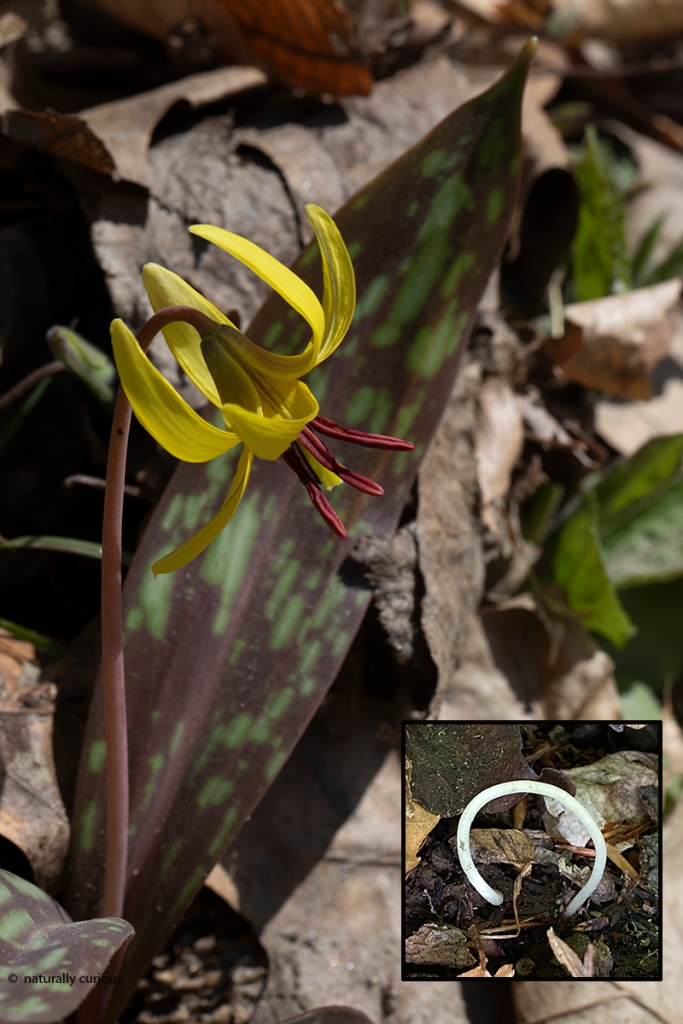
Most dragonflies and damselflies (order: Odonata) live a majority of their life span as larvae in ponds, streams or swamps. At the end of their larval stage, which can last anywhere from several months to years, they emerge from the water onto rocks, emergent vegetation or other substrate, split their larval skin along their heads and backs and fall out of their skin backwards, head first, before clasping their skin or substrate and hanging on for dear life as they pump their body full of air, sending fluid into their wing veins. This process is referred to as eclosion and takes up to several hours. During this time, they are extremely vulnerable as they are unable to fly.
Within a day or so the eclosing insect’s body dries and hardens, they acquire color and take to the air. Different species of dragonflies and damselflies eclose at different times, providing a wide array of species emerging throughout the summer. (Photo: dragonfly eclosing & recently-eclosed damselfly perched on Yellow Pond Lily/Spatterdock.)
Naturally Curious is supported by donations. If you choose to contribute, you may go to http://www.naturallycuriouswithmaryholland.wordpress.com and click on the yellow “donate” button.



























What Other Naturally Curious People Are Saying